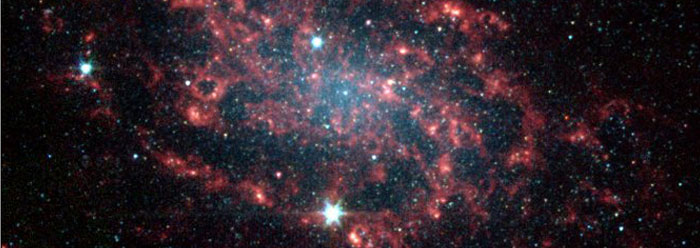
The COSMOS Project
Similar to the Climate project, the Cosmos project started in 2006 after the RATE project ended, but it had begun when Dr. Russell Humphreys joined the ICR staff in 2001. The purpose of the project was to address the issue of starlight and time and any other fundamental cosmic processes that were associated with the issue of deep time. Humphreys published his book Starlight and Time before coming to ICR, but continued to refine his model while at ICR.1 He developed several applications of Einstein’s general theory of relativity that demonstrated that the effects of gravity on time dilation could be applied to the universe as a whole. His application of the general theory of relativity is the basis for understanding how processes at the edge of the universe can occur during a short period of earth time.2
Dr. Humphreys also identified several applications that demonstrated the superiority of his theory. For example, he has challenged the assumption that there is no center to the universe with new data that suggest that galaxies are positioned in concentric shells surrounding our solar system.3 Using his theory, Dr. Humphreys attempted to solve the disparity in the actual and calculated positions of the Voyager spacecraft as they departed our solar system.4 His idea that the universe expanded at the time of creation and the Genesis Flood may help explain the volumetric cooling needed during accelerated decay suggested in the RATE project.5
Dr. Humphreys published many of the advances to his theory after he left ICR. He continues to work on many additional improvements and applications.6, 7, 8
References
- Humphreys, D. R. 1994. Starlight and Time: Solving the Puzzle of Distant Starlight in a Young Universe. Green Forest, AR: Master Books.
- Humphreys, D. R. 2001. Seven Years of Starlight and Time. Acts & Facts. 30 8).
- Humphreys, D. R. 2002. The Battle for the Cosmic Center. Acts & Facts. 31 (8).
- Humphreys, D. R. 2007. Creation Cosmologies Solve Spacecraft Mystery. Acts & Facts. 36 (10): 10.
- Humphreys, D. R. 2005. Young Helium Diffusion Age of Zircons Supports Accelerated Nuclear Decay. In Radioisotopes and the Age of the Earth: Results of a Young-Earth Research Initiative. Vardiman, L., A. A. Snelling and E. F. Chaffin, eds. El Cajon, CA: Institute for Creation Research and Chino Valley, AZ: Creation Research Society, 67-74.
- Vardiman, L. and D. R. Humphreys. 2010. A New Creationist Cosmology Part 1. Acts & Facts. 39 (11): 12-15.
- Vardiman, L. and D. R. Humphreys. 2011. A New Creationist Cosmology Part 2. Acts & Facts. 40 (1): 12-14.
- Vardiman, L. and D. R. Humphreys. 2011. A New Creationist Cosmology Part 3. Acts & Facts. 40 (2): 12-14.








